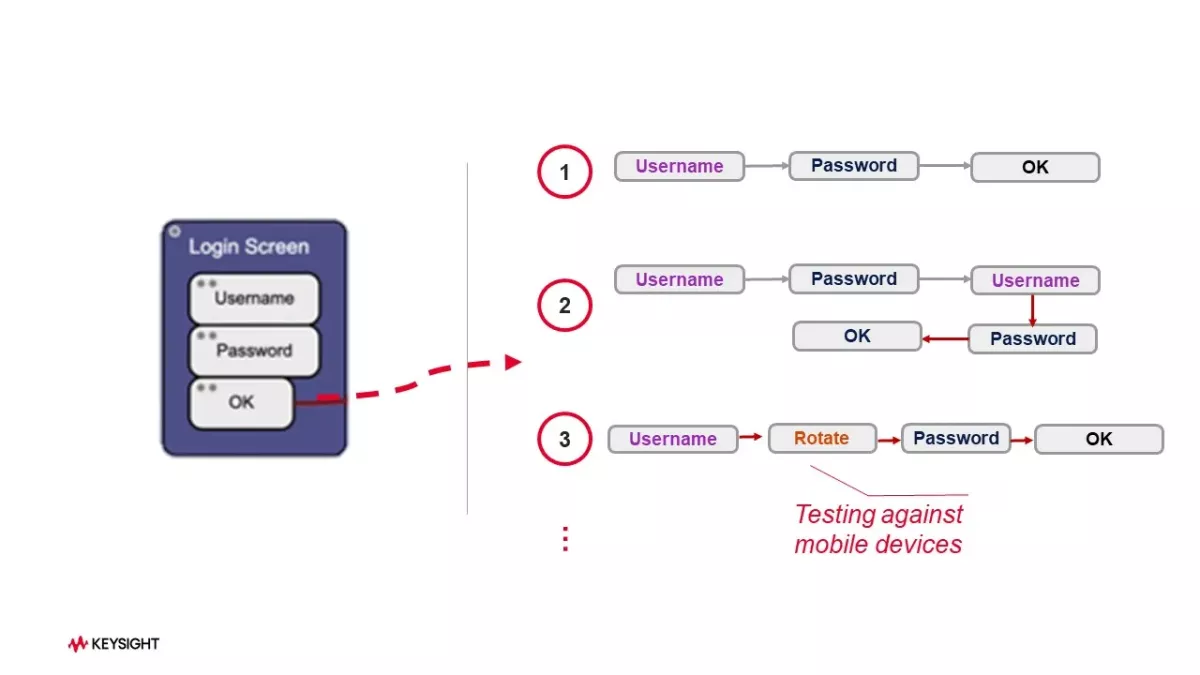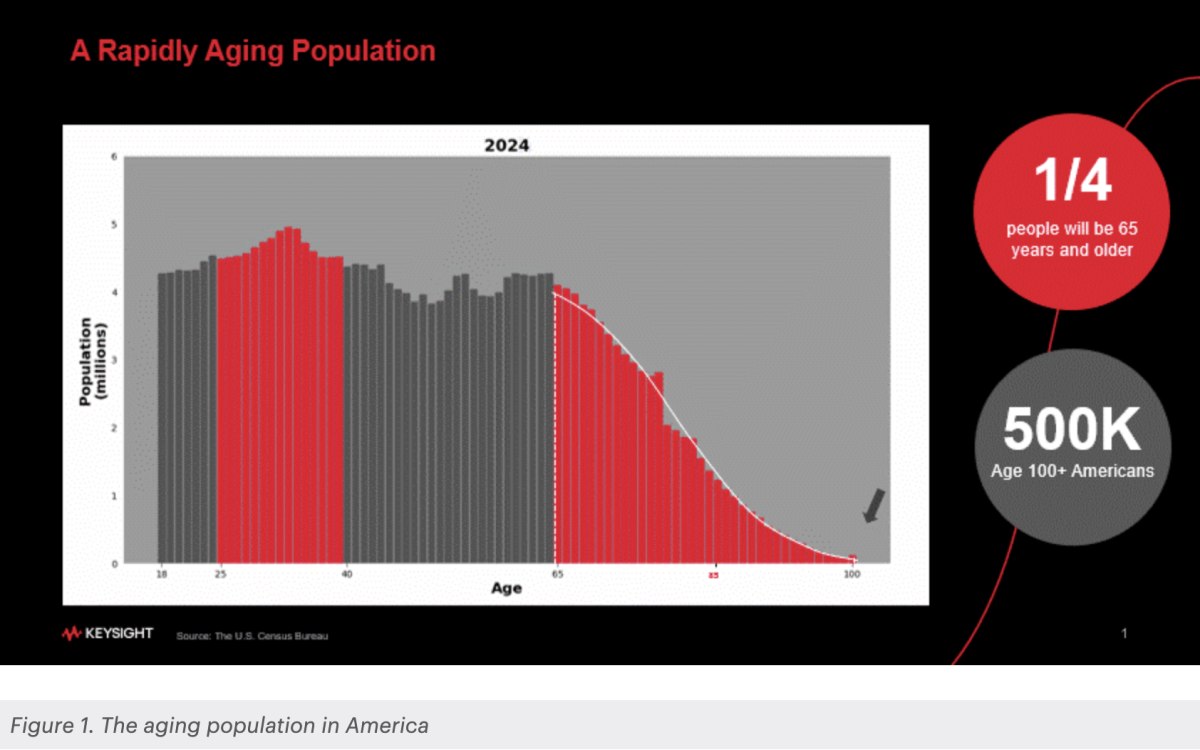How AI-Driven User Experience Testing Enhances Digital Health Accessibility
by Emily Yan, Product Marketing Manager
The $211 billion global digital health market continues to leap forward as healthcare organizations capitalize on the increasing demand for telehealth and adopt the Internet of Medical Things (IoMT) to improve care outcomes. In the digital age, the potential for improved patient outcomes is profound. However, as we charter this new territory, one fast-growing demographic requires our focused attention – our senior citizens. To them, these digital advancements, rather than being second nature, often pose technical obstacles that can be daunting to navigate. A pivotal part of the solution lies in refining the digital experience of healthcare software.
In this article, we will delve into the key obstacles to digital health for senior citizens, the challenges of user experience (UX) testing, and explore how AI can optimize UX testing, ultimately boosting the accessibility of digital health for all.
Why User Experience Testing is Critical to Accessible Digital Healthcare
By 2060, adults over 65 will make up a quarter of the US population, according to the US Census Bureau’s projection as shown in the attached video. Among this demographic, over half of a million will be centenarians. This demographic shift underscores a crucial imperative: the design of patients’ digital experiences must accommodate the unique needs of an aging demographic.
However, recent research has shown barriers to digital health persist for senior citizens. 2 out of 5 adults over 65 reported that their telemedicine visit was worse than in‐person care, with only 5% considering it was better.1 Despite the promised convenience of digital health technologies, senior citizens reported frustrating technical challenges. Nearly three-quarters of those over 65 said they needed help using new electronic devices.
Taking the patient portal app as an example, this platform often serves as the first point of contact for patients seeking digital health services. Yet, even something seemingly straightforward, like the login screen, can become frustrating for seniors if not adequately tested. Be it forgotten passwords, pesky program bugs, and difficult-to-read content.
Thorough UX testing is essential to effectively remove these technical barriers and deliver a more user-friendly, seamless digital experience to our senior citizens.
Key Challenges of User Experience Testing in Healthcare
User experience (UX) testing in healthcare is increasingly complex due to the involvement of multiple modules and services from different vendors across different platforms. For instance, Electronic Medical Record (EMR) systems and other healthcare applications undergo more frequent update cycles, with each change impacting one another. Traditional manual testing becomes time-consuming and costly. The need to address key areas such as functionality, localization, performance, accessibility, and user experience further prolongs the QA process.
- Functionality testing ensures the healthcare software performs reliably and securely, handling protected health information (PHI), medication, and insurance claims correctly.
- Localization testing makes sure that the software can adapt to different language settings so the content remains accessible after language changes.
- Performance testing is essential to examine the system’s stability under heavy data loads. By simulating peak scenarios, it identifies potential bottlenecks and helps prevent system downtime, ensuring uninterrupted care delivery.
- Accessibility testing assesses the software's compatibility with assistive technologies and evaluates its usability for all users, particularly those with disabilities like vision impairment.
- User experience testing captures real user behavior and feedback to fine-tune every step of the digital healthcare experience.
With the extensive list of testing requirements, QA teams often find themselves constrained by time and resources. As a result, they may only evaluate a few critical scenarios, leaving many potential user journeys unexamined.
The Power of Digital Twin in Healthcare Software Testing
This is where AI and digital twin technology enter the picture, poised to redefine user experience testing in healthcare.
A "digital twin," as described by McKinsey, is a virtual representation of a physical asset, person, or process.2 Healthcare leaders are increasingly recognizing the power of digital twins to improve care quality as shown in Figure 1.
In the context of software testing, we define “digital twin” as a simplified model that encompasses all possible user journeys through the application under test. By leveraging digital twin models, intelligent test automation tools like Eggplant make comprehensive testing of various user journeys possible, addressing scenarios that may have been overlooked due to limited manual testing capacity.
For example, consider the testing of a patient portal app's login screen. Using traditional approaches, a resource-constrained QA team may only test two cases—correct and incorrect username credentials—before moving on. However, using a digital twin approach, exploring numerous user behaviors and variations becomes possible with time constraints. Within one model in Eggplant, testers can easily introduce additional steps, change the order of the actions, and incorporate mobile user experiences like "rotate screen" as shown in Figure 2.
The number of possible user journeys that can be extracted from a single digital twin model is staggering. A typical mobile application model can yield over 9 billion separate cases to explore all combinations fully. To efficiently navigate this vast testing landscape, test automation tools employ machine learning (ML) algorithms to enhance testing coverage efficiently. By analyzing historical patterns, prioritized cases, and real-user insights, ML algorithms can auto-generate test cases and rigorously scrutinize each user interaction, ensuring optimal digital experiences. The attached video displays Eggplant’s AI-driven software testing for healthcare.
Benefits of AI-Driven User Experience Testing
At Keysight, we are proactively exploring the full potential of digital twin technology and helping healthcare organizations maximize the benefits AI-driven software testing.
Increased testing coverage across platforms
One primary advantage of AI-driven UX testing is significantly increased test coverage. Traditional testing methods are often limited in scope, focusing on predetermined scenarios. However, AI-powered testing tools leverage machine learning algorithms to analyze vast amounts of data and identify historical patterns. Software testing teams can efficiently cover a broader range of user scenarios and reuse test cases across different platforms, leading to a more thorough testing of the holistic digital experience.
Accelerated testing speed
Traditional manual testing processes are time-consuming and often cannot keep up with the pace of modern healthcare software’s development cycles. However, AI-driven UX testing tools can autonomously simulate user interactions, generate test cases, and execute tests, freeing up testers’ time from repetitive processes. With faster test execution, software development teams can also detect defects earlier and meet user expectations promptly.
Optimized digital experiences for all
Digital healthcare applications need to be user-friendly, accessible, and capable of catering to diverse user needs. AI-driven UX testing can simulate realistic user interactions from different demographic and predict how specific user groups will interact with the application. These simulations can effectively capture potential pain points and fix usability flaws for senior citizens.
Conclusion
As the global digital health market expands, ensuring a positive user experience becomes paramount. Digital healthcare for all is more than just a buzzword—it's a mission statement. By leveraging AI and digital twin technologies, healthcare organizations can evaluate how their applications perform for senior citizens. With advancements in AI, we look to collaborate with healthcare organizations of all sizes to optimize user experiences beyond our wildest dreams, making digital healthcare inclusive and accessible for everyone.
Take our guided product tour today to unlock the power of AI-driven UX testing.
References
1 Older adults' perspectives on primary care telemedicine during the COVID‐19 pandemic. The American Geriatrics Society, 2022. https://www.ncbi.nlm.nih.gov/pmc/articles/PMC9538237/
2 Digital twins: From one twin to the enterprise metaverse. McKinsey Digital, 2022. https://www.mckinsey.com/capabilities/mckinsey-digital/our-insights/digital-twins-from-one-twin-to-the-enterprise-metaverse
3 Digital twins: From one twin to the enterprise metaverse. McKinsey Digital, 2022. https://www.mckinsey.com/capabilities/mckinsey-digital/our-insights/digital-twins-from-one-twin-to-the-enterprise-metaverse





